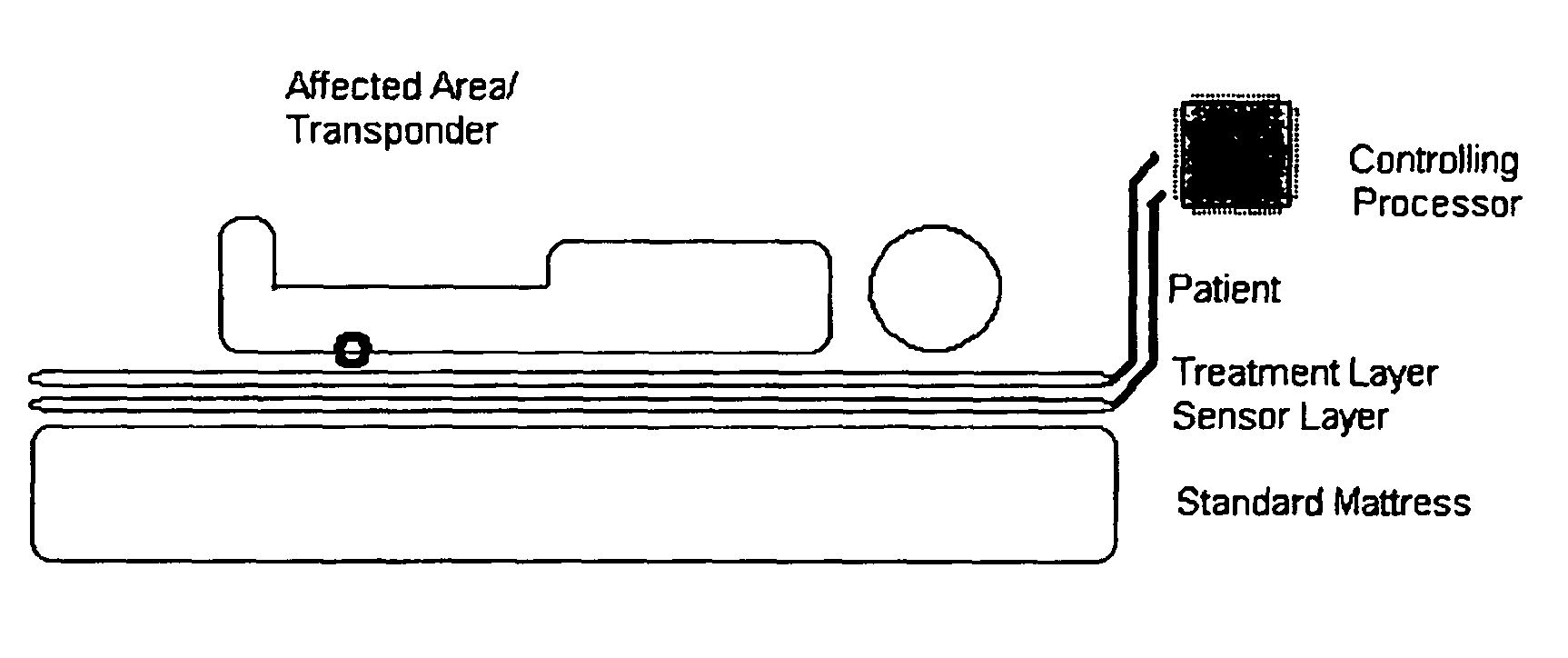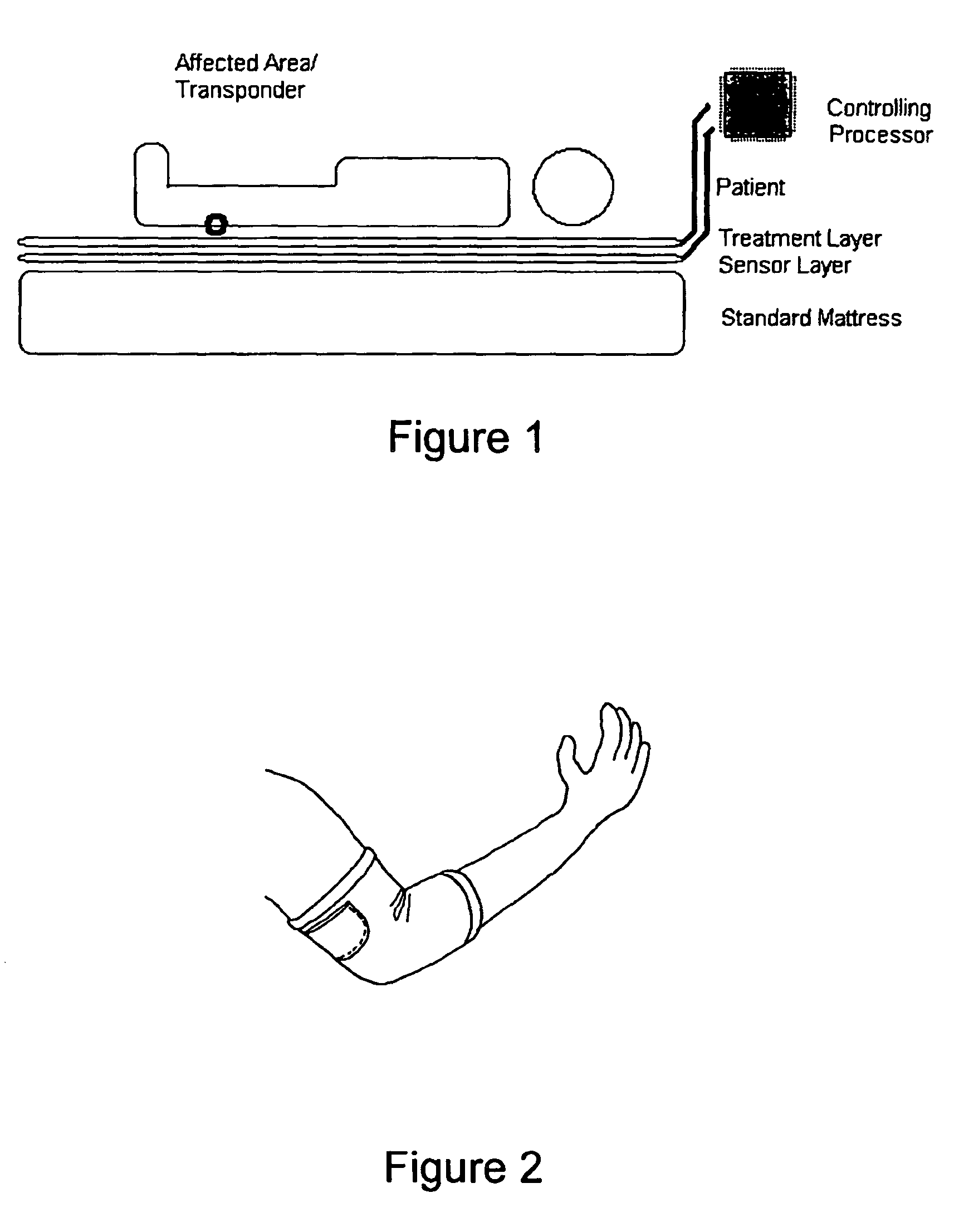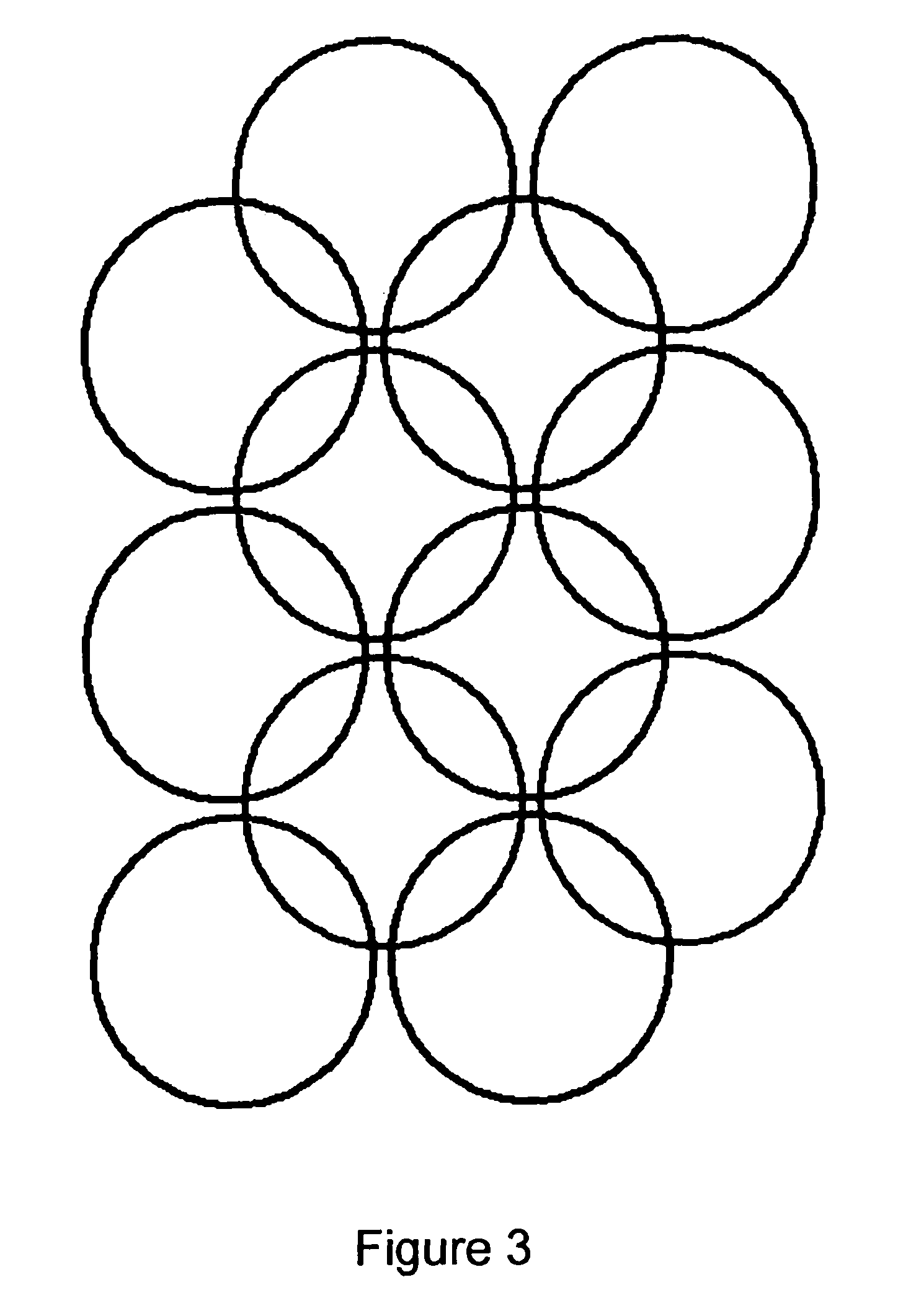Interactive patient system
a patient system and patient technology, applied in the field of interactive patient systems, can solve the problems of reducing the perfusion to the affected areas, affecting the treatment of patients undergoing acute or chronic treatment, and affecting the treatment of patients, so as to achieve the effect of small range and rarely needing a battery chang
- Summary
- Abstract
- Description
- Claims
- Application Information
AI Technical Summary
Benefits of technology
Problems solved by technology
Method used
Image
Examples
Embodiment Construction
[0114]In preferred embodiments, the system provides comfort and relief to a patient in bed by applying any combination of, but not limited to, heat or cooling, vibration, pressure relief, elevation and / or another form of treatment, to an affected area.
[0115]The affected area is identified by a transponder attached to the patient. Search coils embedded in the mattress or mattress overlay or underlay are used to locate the affected area of the patient to treat it accordingly.
[0116]A control means or controlling processor administers a selected treatment for the affected area periodically, as programmed by an operator, such as a hospital staff member.
[0117]As is illustrated in FIG. 1, the patient wears a presence identification means on or around the affected area requiring treatment. This provides a location reference for the affected area relative to the mattress. A sensing means or sensor layer is used to detect the location of this presence identification means. The location is the...
PUM
 Login to View More
Login to View More Abstract
Description
Claims
Application Information
 Login to View More
Login to View More - R&D
- Intellectual Property
- Life Sciences
- Materials
- Tech Scout
- Unparalleled Data Quality
- Higher Quality Content
- 60% Fewer Hallucinations
Browse by: Latest US Patents, China's latest patents, Technical Efficacy Thesaurus, Application Domain, Technology Topic, Popular Technical Reports.
© 2025 PatSnap. All rights reserved.Legal|Privacy policy|Modern Slavery Act Transparency Statement|Sitemap|About US| Contact US: help@patsnap.com



